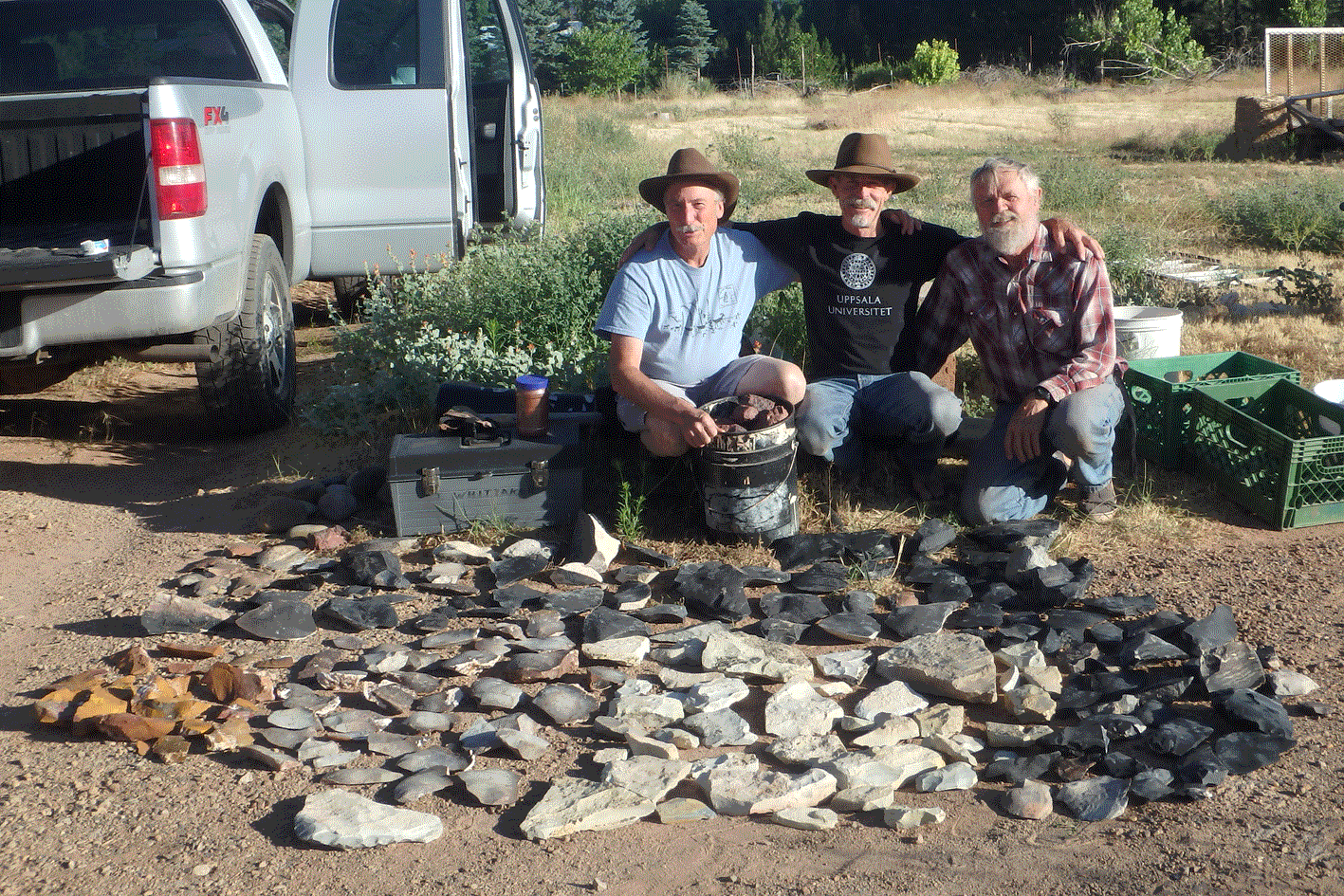
Site is in development off and on. Link buttons with white backgrounds haven't been completed. Colored buttons should work. Please let me know if you encounter a broken link. Comments and suggestions welcome
Wyoming Road Trip July 2019
While visiting Wyoming in the summer of 2018, my wife Cindy and I were taken by George Zeimens to see the Sunrise mine, the Powers II archaeological site and his museum in Lingle, Wyoming. The museum is part of a not-for-profit organization; the Western History Center . It was an amazing experience.
The Sunrise mine is the location not only of an historic iron mine and town but also of an ancient red ochre and chert quarry known as the Powars II site. The property is privately owned and the owner is very interested in the history and prehistory and is supporting research into its past. Subsequent to my visit I proposed to hold a knap-in at the location to help understand the use of the chert source. It would also be an excuse to have a road trip with a couple of flintknapping buddies, to collect some good stone, see some of my old archaeologist colleagues and support the work and the Western History Center.
This was agreed and I invited Greg Nunn of Castle Valley, Utah and John Whittaker of Grinnell College, Iowa to join me. They agreed and we decided to make our visit part of a road trip. This took place between 10 and 17 July 2019. We met at Greg's place in Castle Valley, Utah, packed our gear and headed out to our first stop in southwestern Wyoming to collect silicified oil chert, including a variety known as Tiger Chert. This source occurs over a wide area and was
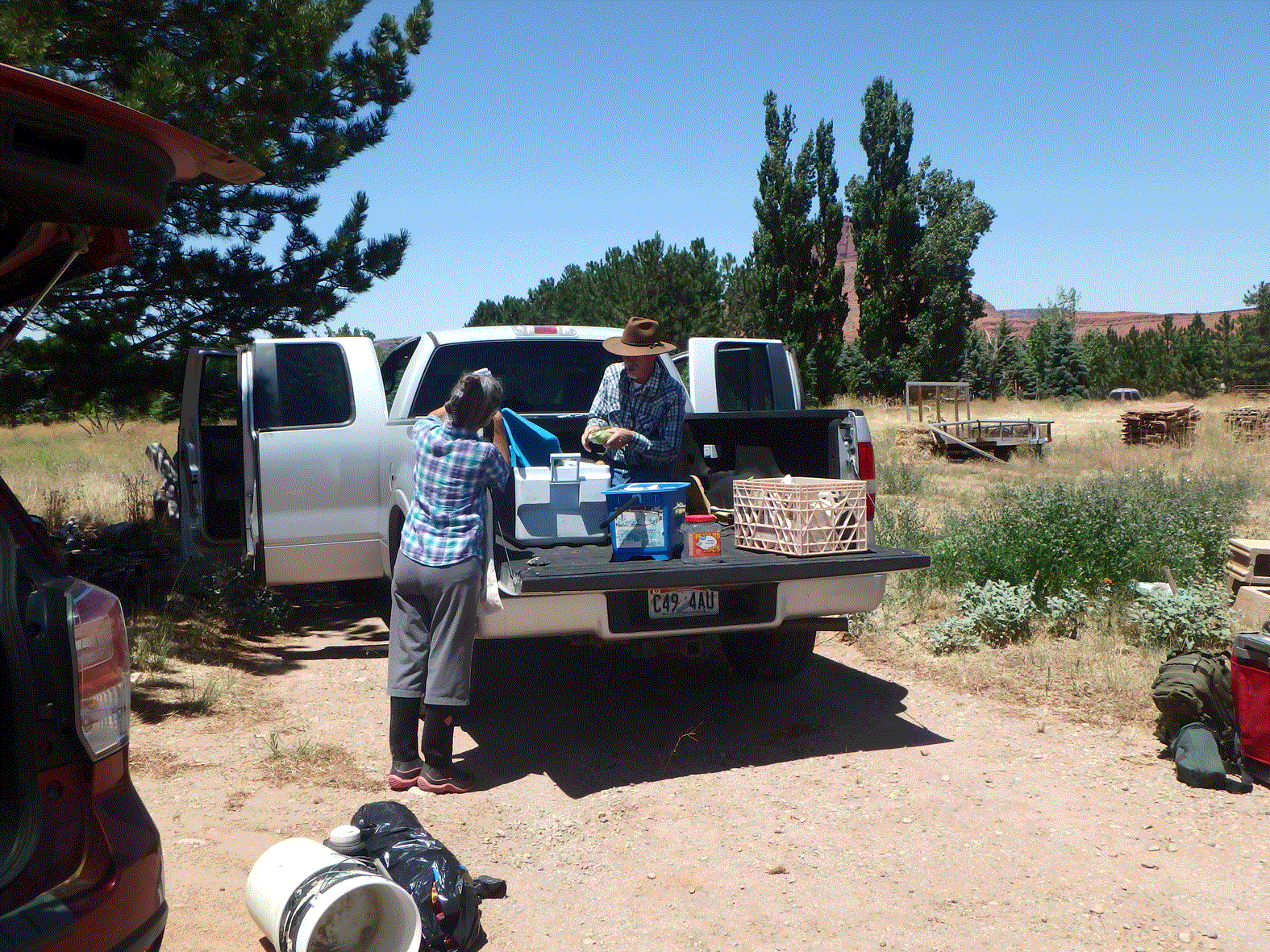
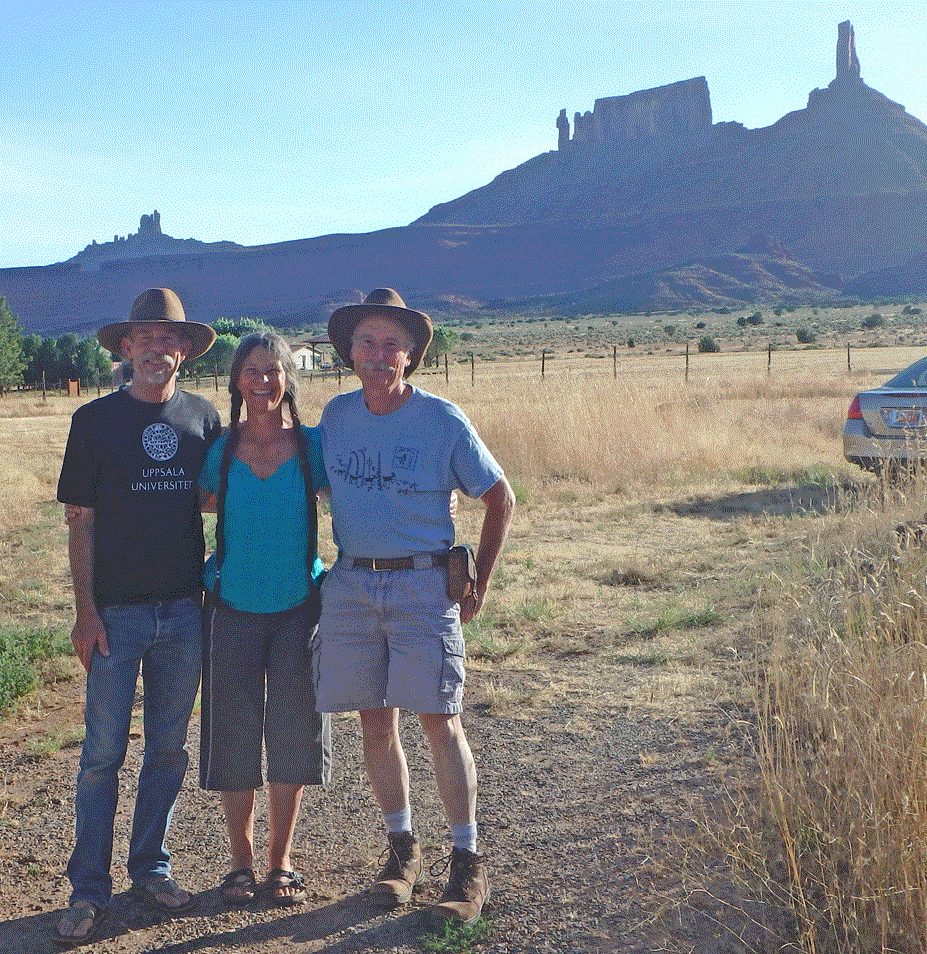
Karen and Greg Nunn packing truck
Greg Nunn, Karen Nunn and John Whittaker
extensively used and prized by a succession of people at least since Clovis times at the end of the last ice age. Several of the pieces included in the Fenn Cache were made of this stone. As always, we were very careful not to disturb any ancient deposits and collected only unmodified pieces, mostly from recently disturbed areas. We camped at the location and were pleasantly surprised to find the area free of litter.
While this stone may not be considered one of the best for flaking, it has several advantages. It can occur in large pieces, it is strong, heat treats at relatively low temperatures (circa 285 F) and some varieties patinate with beautiful banded patterns. We limited the amount we collected to three nodules and a few smaller pieces.

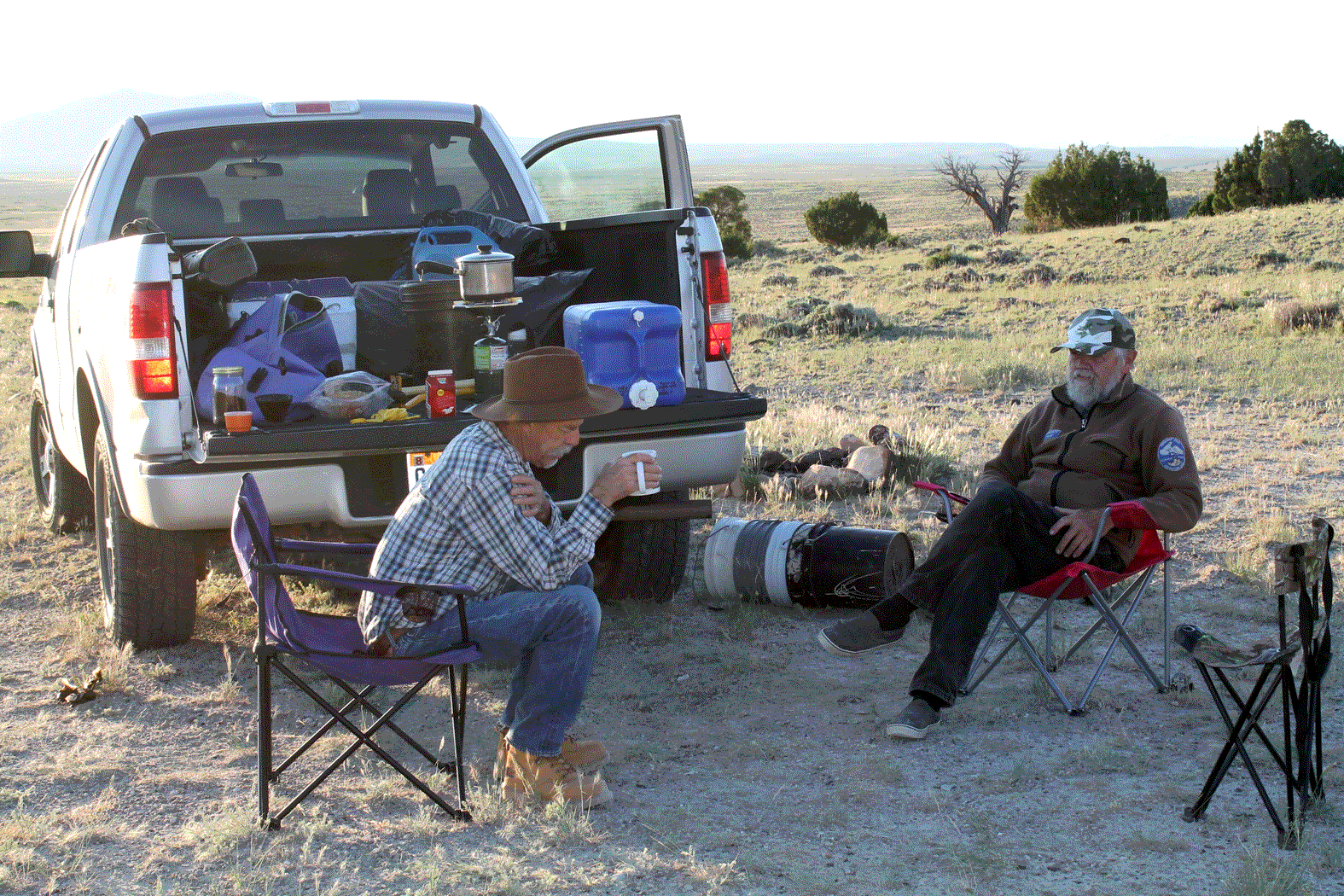
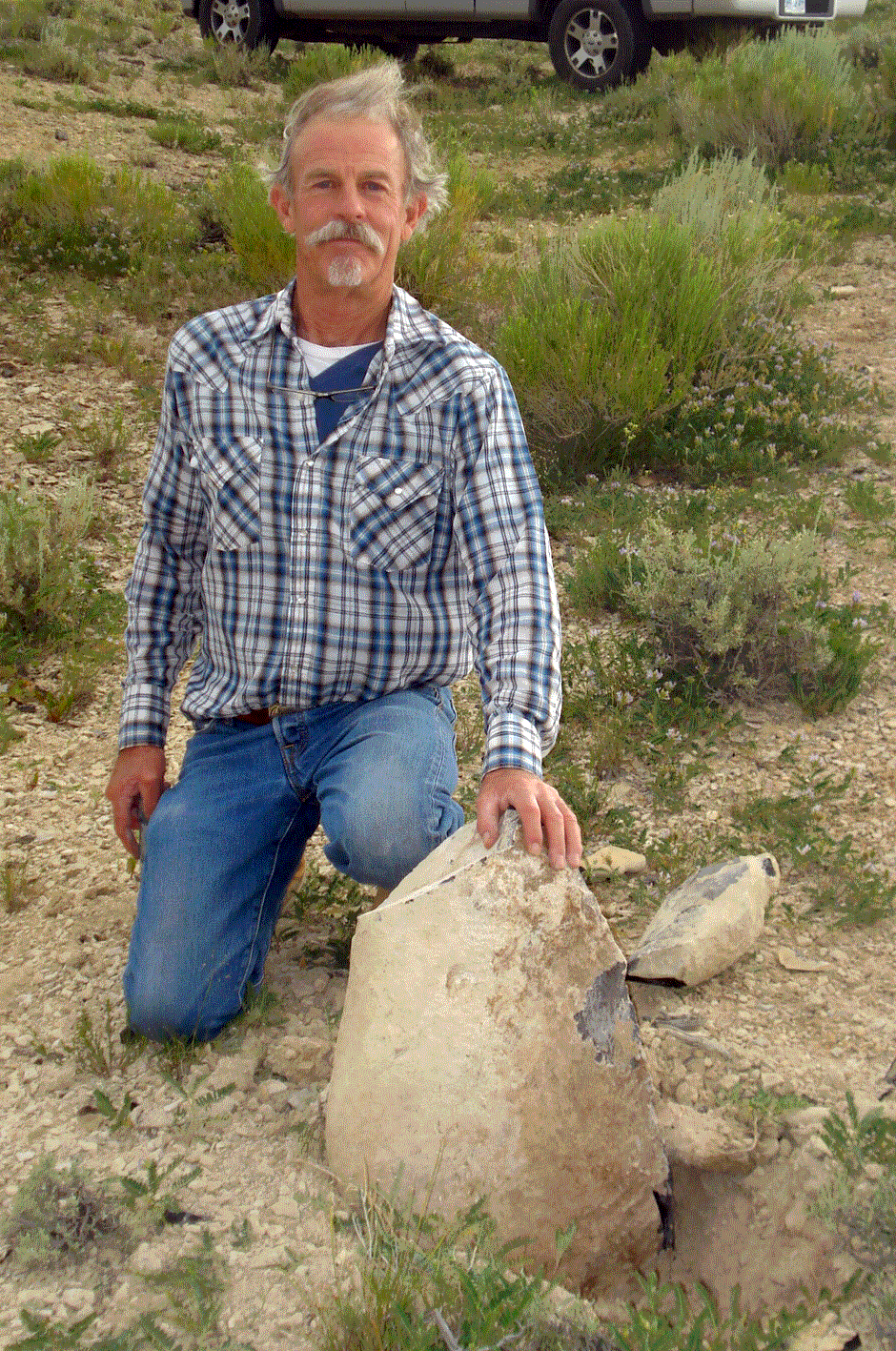
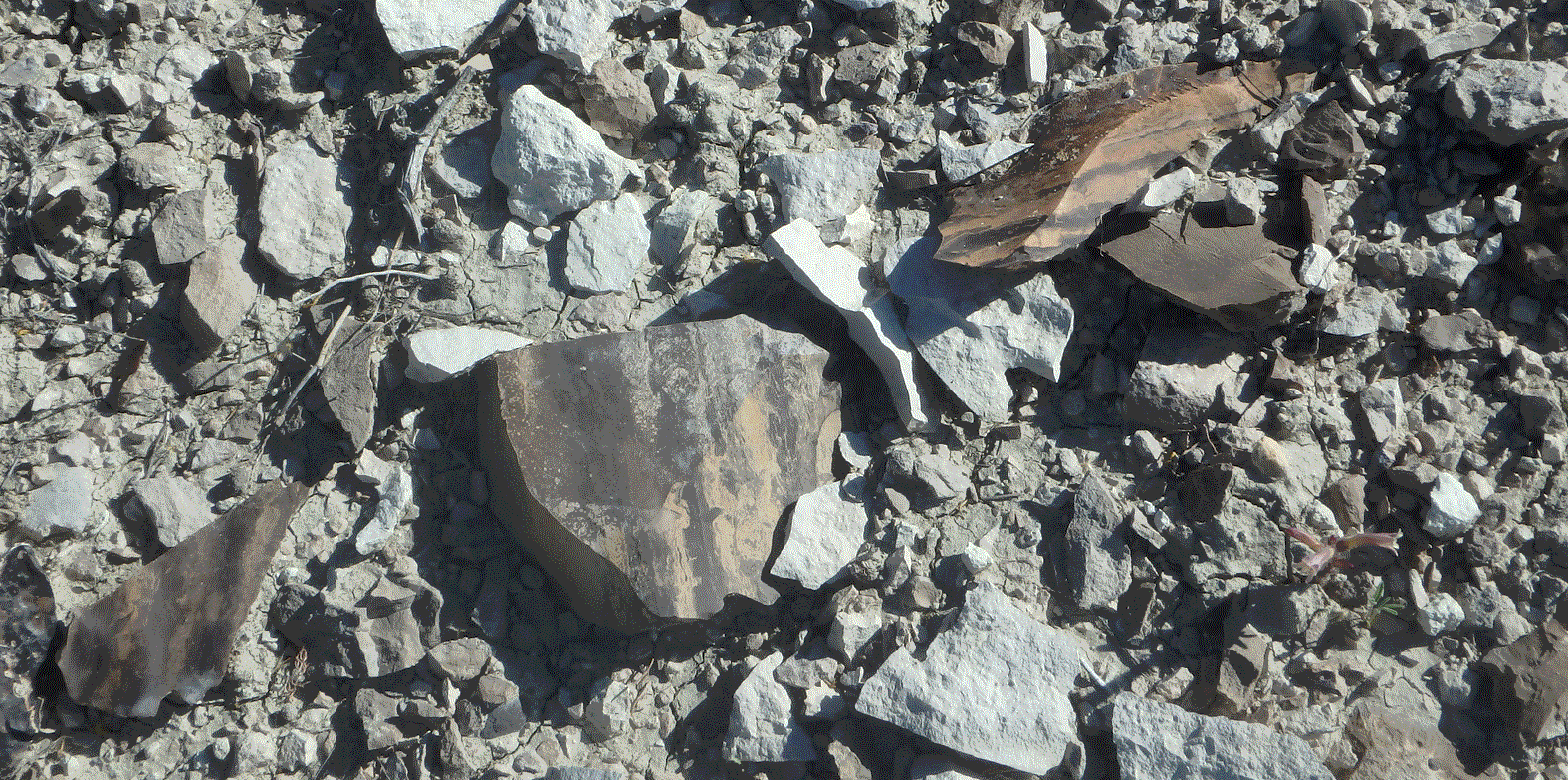
Tiger chert flakes

Fresh and weathered flakes
Greg and John extracting large nodule
The second day we moved on to another source known to Greg and me near Rock Springs, Wyoming. This tone is a silicified shale which flakes nicely but is quite soft. It does not produce good strong edges and seems not to have been used prehistorically. It occurs mostly in tabular pieces and on occasion has some colorful inclusions. Some of the tabs are quite large and fun to knap. Again, were were selective and gathered relatively small amounts.

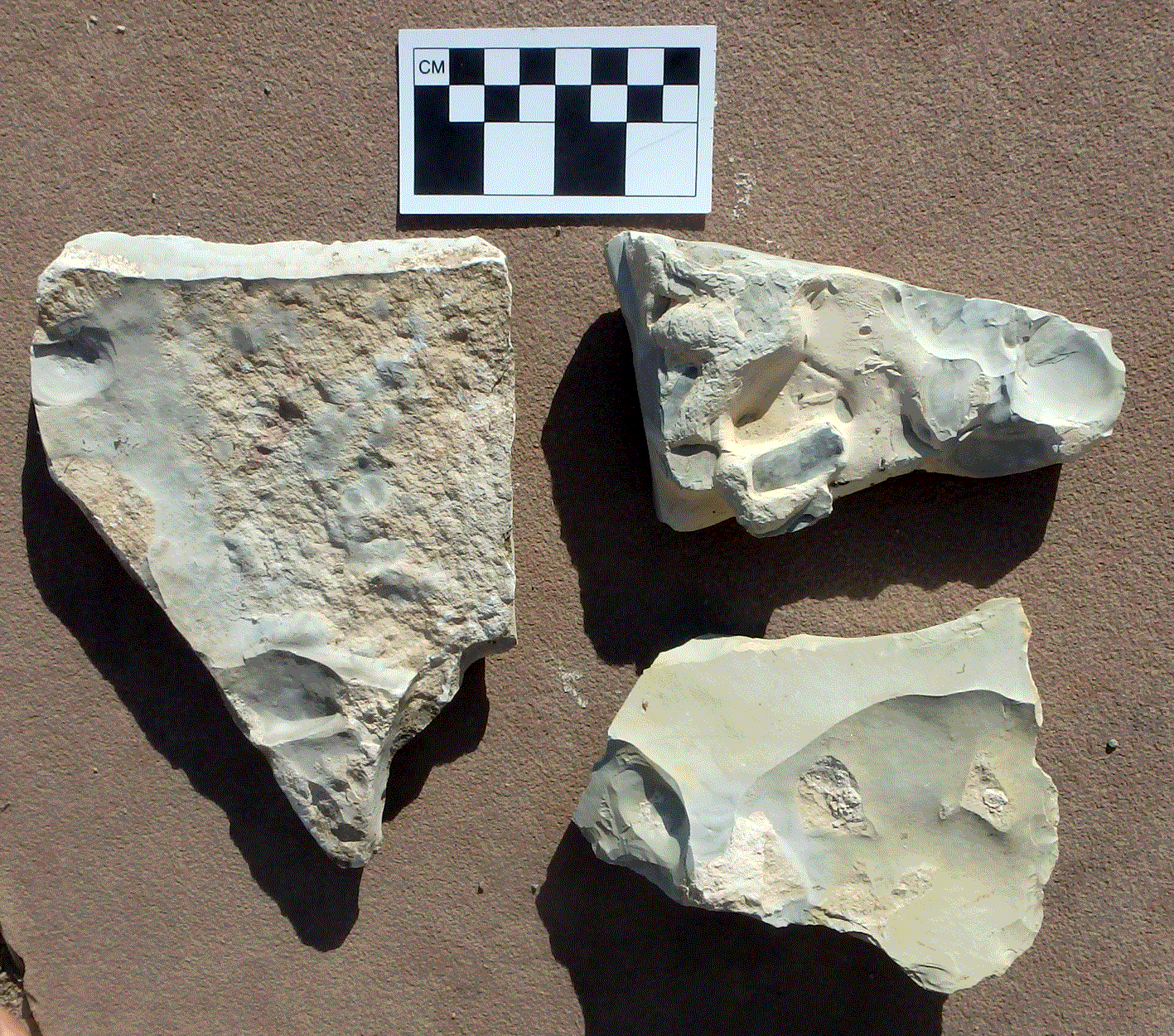
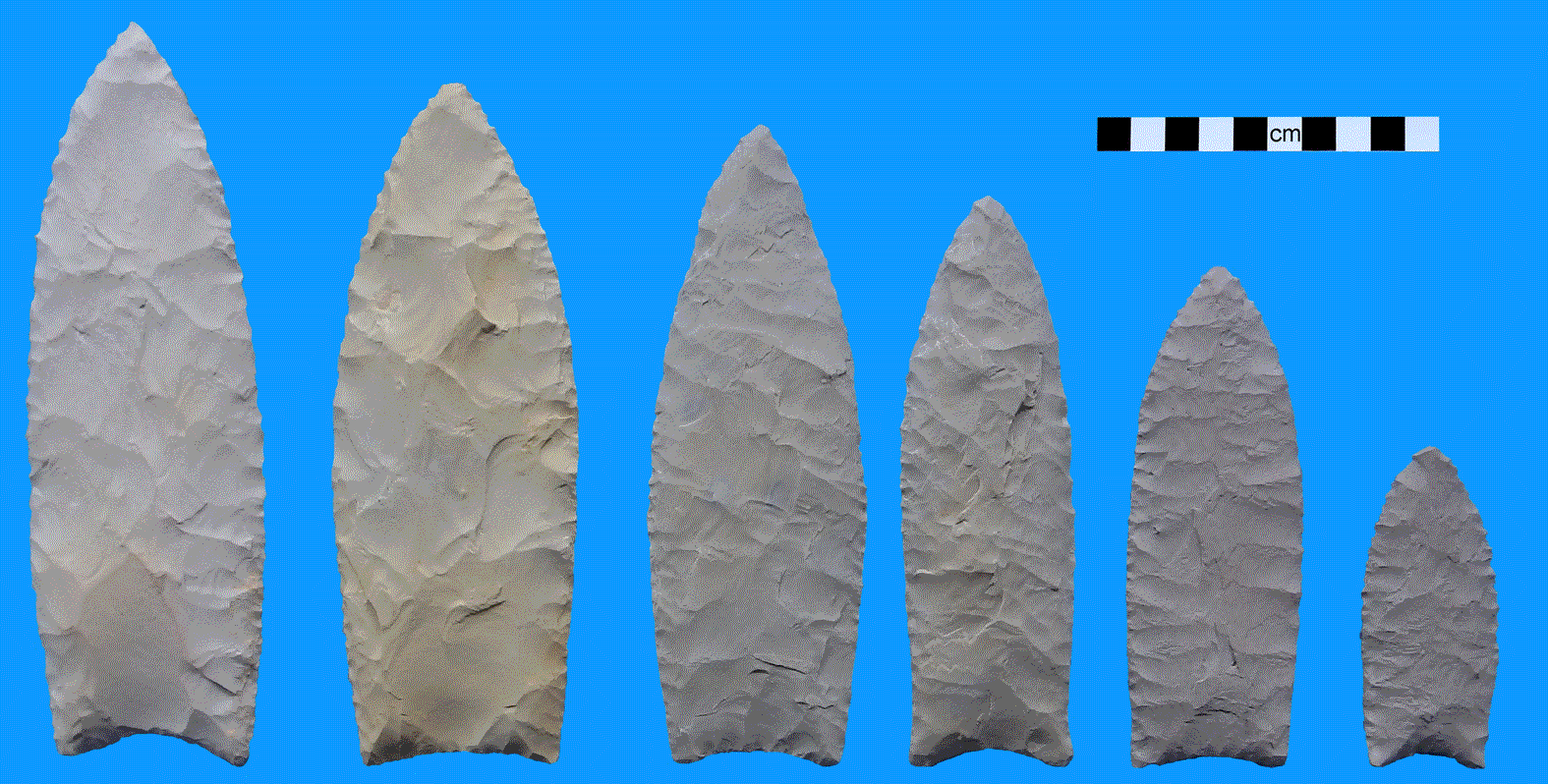
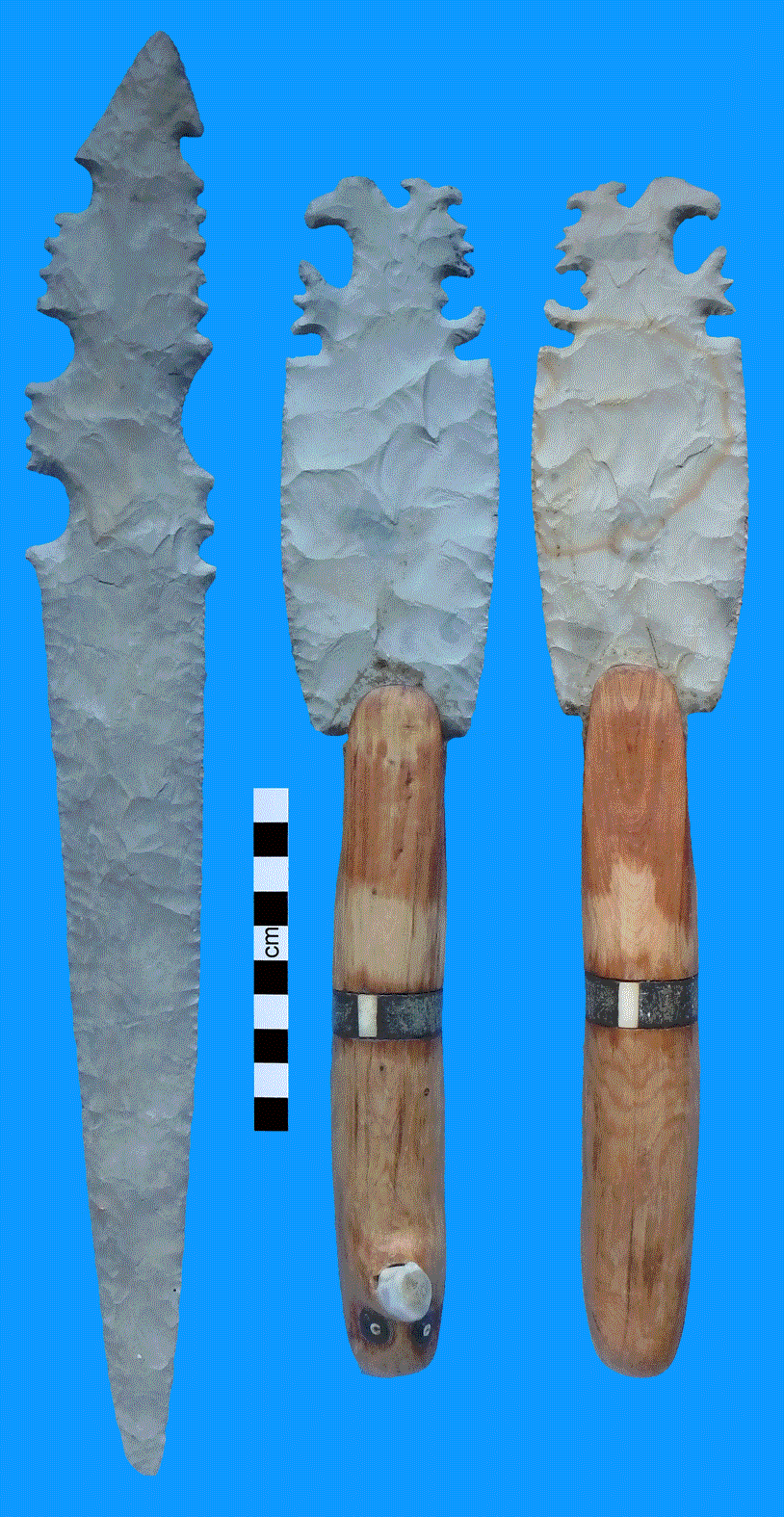
Greg and Bruce in field camp
Greg with large nodule
Silicified shale in-situ
Typical pieces of silicified shale
Points made by Bruce at Hell Gap knap-in
It has been a wet year in Wyoming and the hillside at the source had many beautiful flowers and butterflies
Eccentric forms of Rock Springs silicified shale by Bruce Bradley Made in 1990s

Sego lily
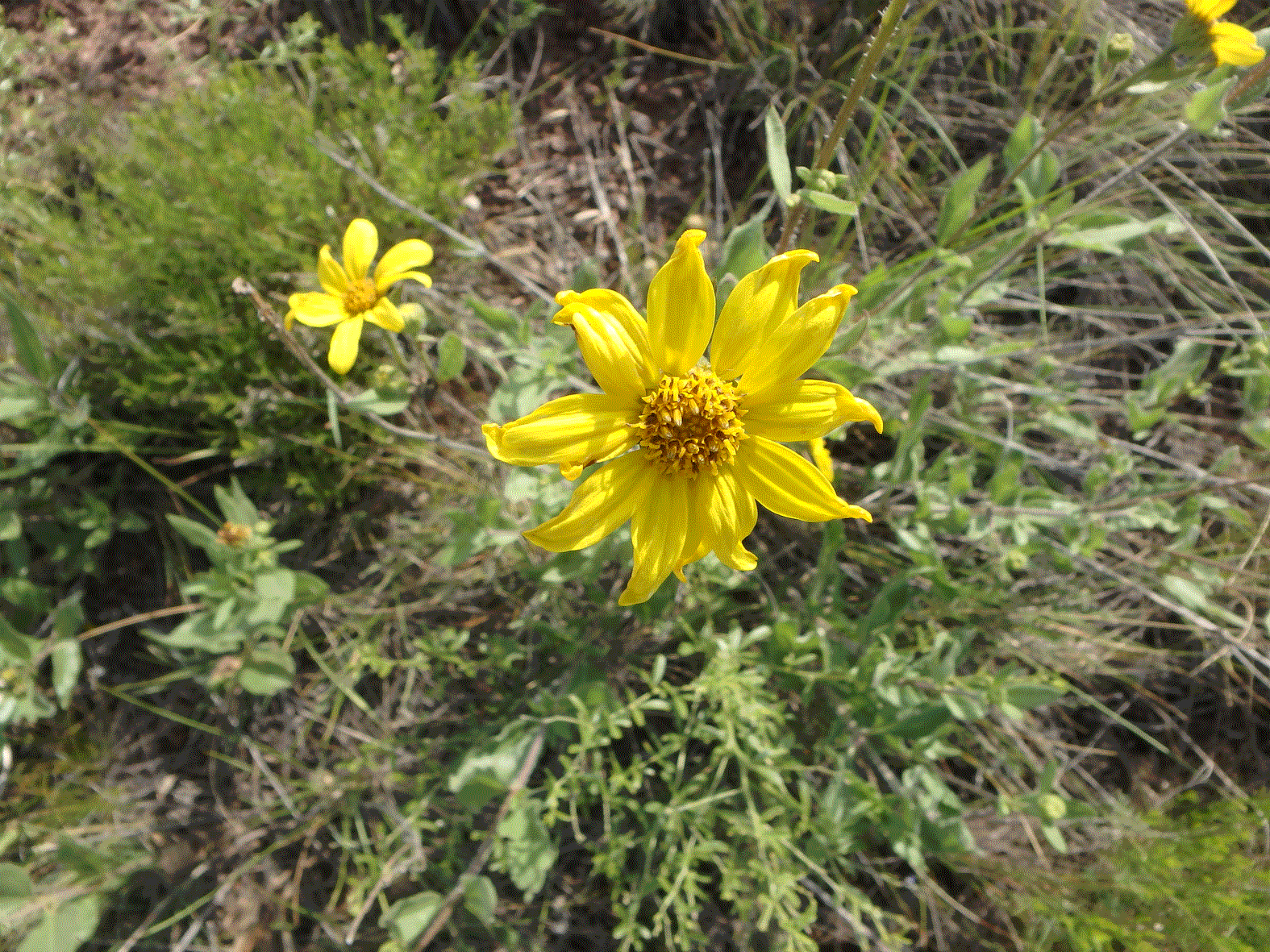
Cutleaf balsamroot
Balsamorhiza macrophylla
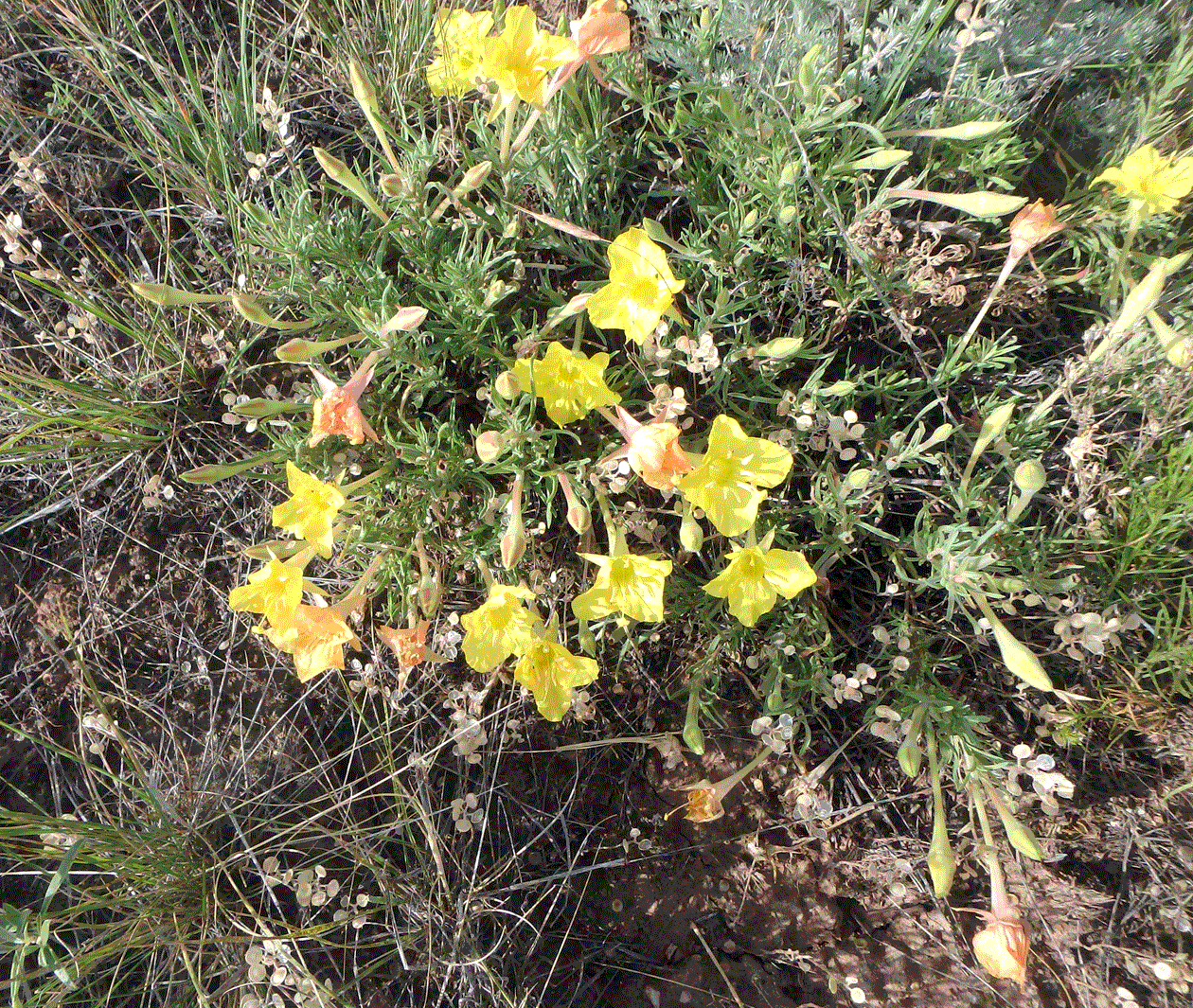
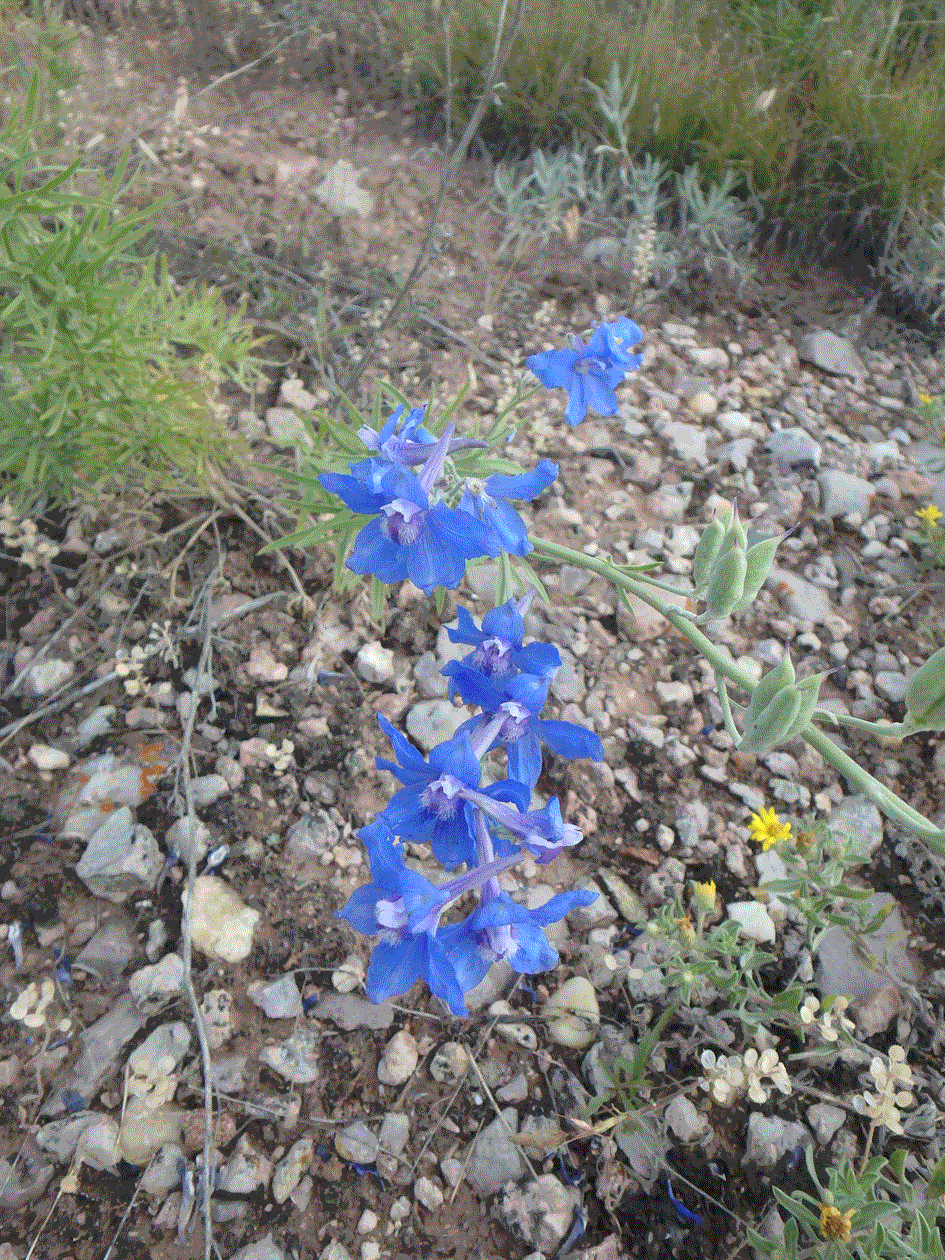
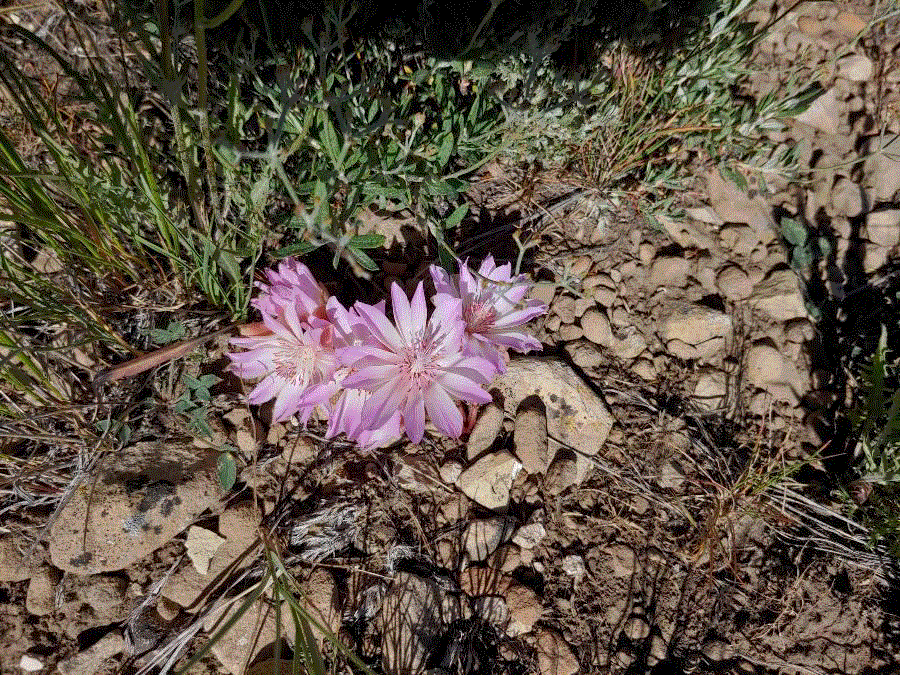
Primrose(?)
Alkanet Anchusa officinalis (?)
Bitter-root Lewisia rediviva
After collecting stone we headed for our first venue; the Hell Gap Site. It was a long drive across southern Wyoming with lots of antelope along the way.

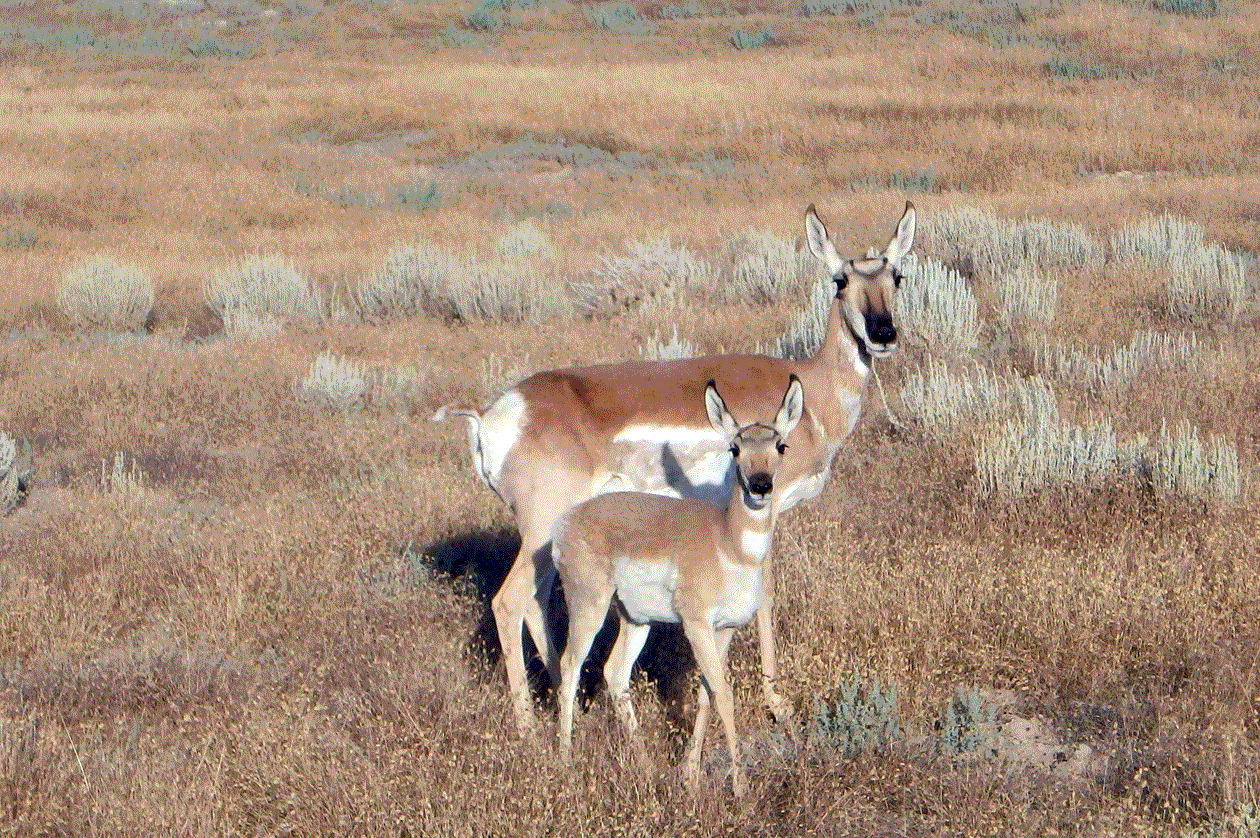
Pronghorn Antelope Antilocapra americana
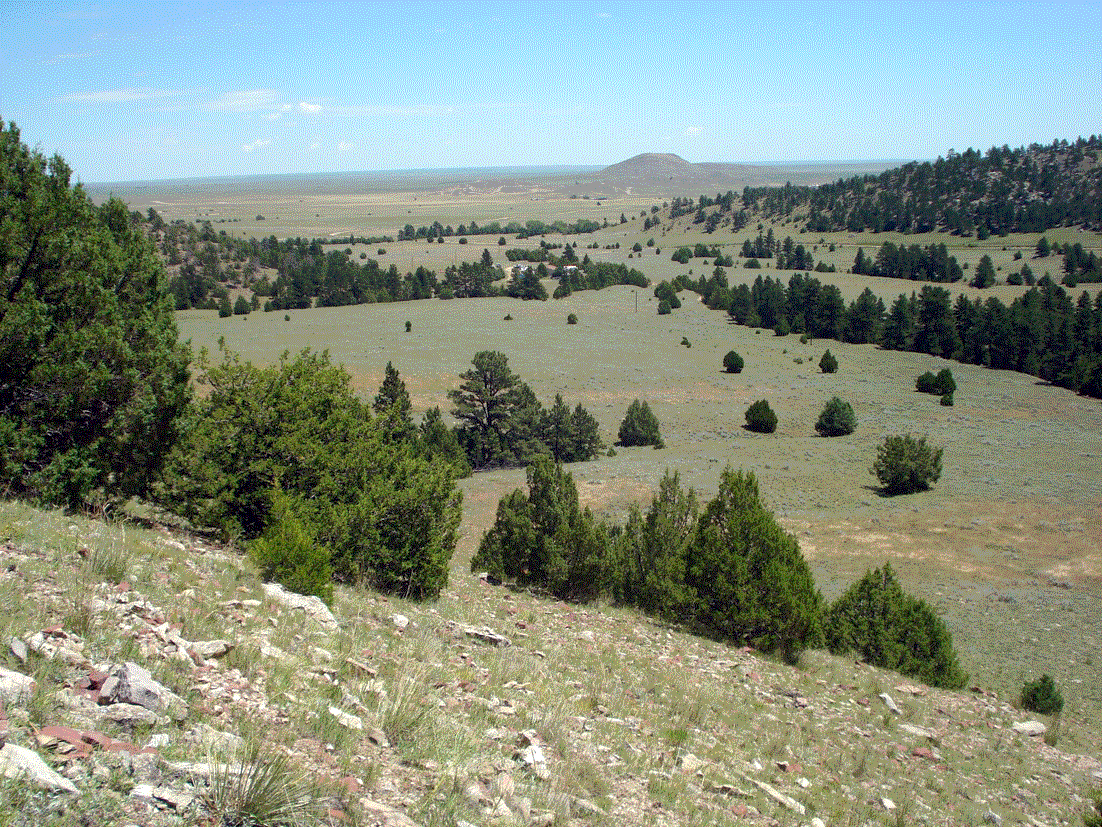
Overlooking Hell Gap toward the High Plains
We arrived Friday evening in time for a Ghanian supper of goat innards in various forms. The mosquitoes were fierce so we set up our tent. It was at the end of the second session of the Wyoming field school run by Marcel Kornfeld and Marylou Larson. Along with the field school participants there were visitors from Ghana and Jamaica. Several other flint knappers also joined us for the site open house and knap-in on July 13th.


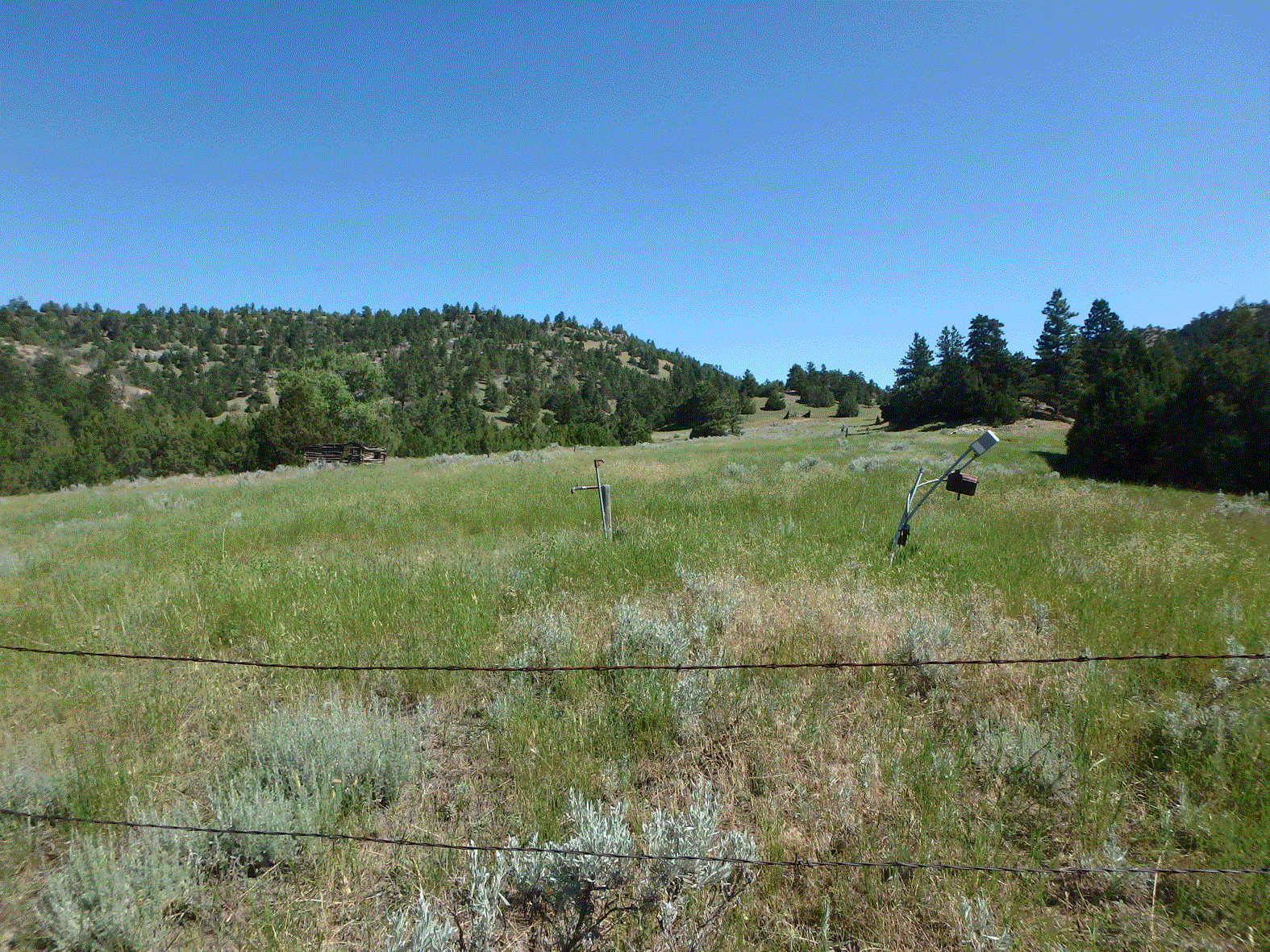
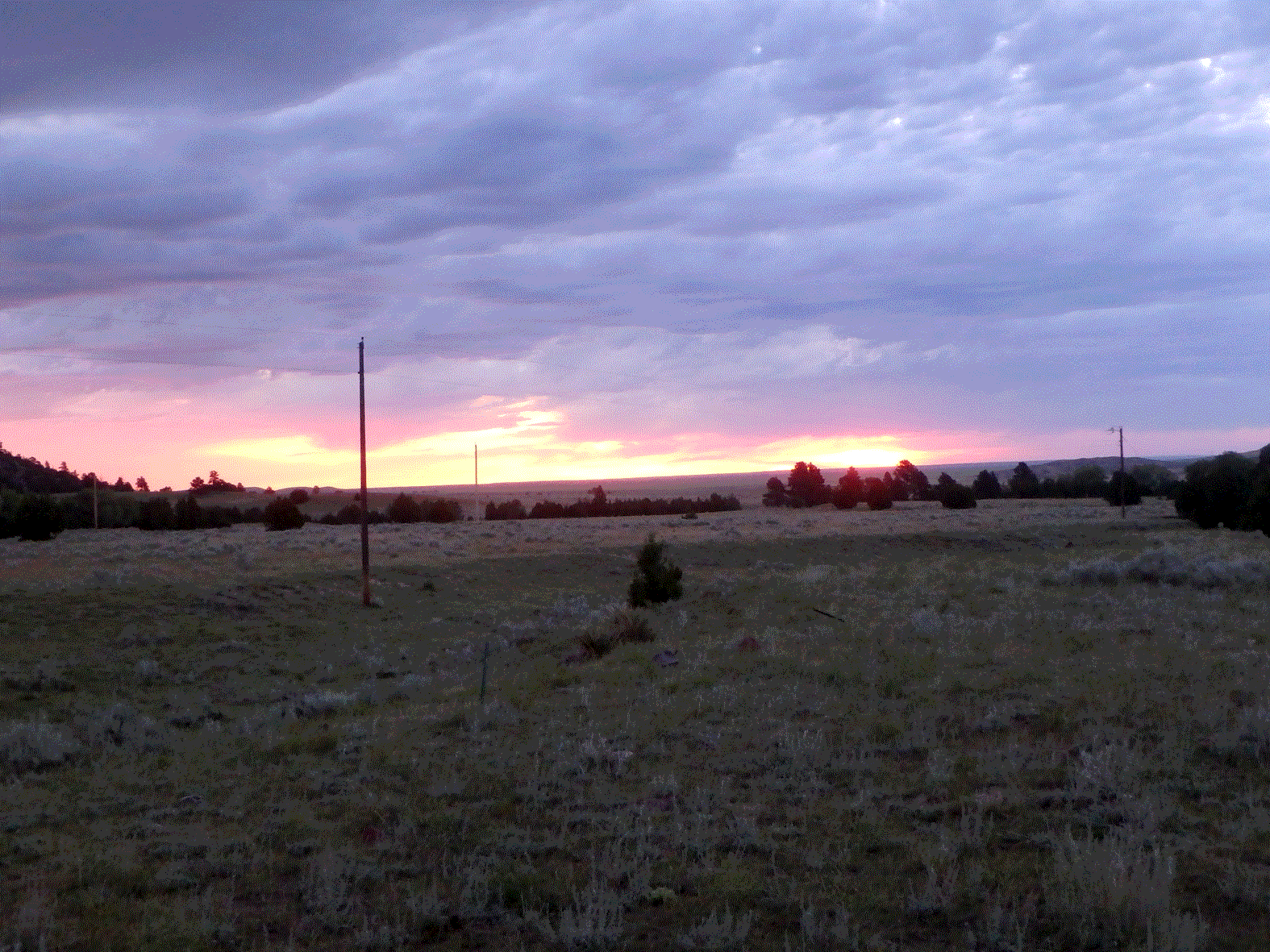



Locality 1
Marcel explaining site history and current research
Current excavations in Locality 1
Saturday morning Marcel gave us an extended site tour describing former excavations, geomorphological investigations, current research and interpretations. The rest of the day was spent interacting with visitors to the open day with Greg, John, several other knappers and me showing and explaining how stone tools were made. It was a fun day and ended with a meal of pit-roast goat. Sunday morning I did a knapping session for the field school and other folks at the camp, including a visit by Dr. Todd Surovel's field crew who were working at the La Prele mammoth site. He invited us to visit the site, which we did later in the week. Greg, John and I packed up and moved to our next stop in the afternoon.
It was a short drive over to Sunrise, just outside Hartville, Wyoming. This was the primary reason for the trip. We were able to learn a lot about this special red-ochre and stone source, about the history of iron mining in eastern Wyoming, visiting with colleagues and meeting new people with common interests. I had co-ordinated the planning of this event with George and Geri Zeimens. Unlike Hell Gap the main mission was to gain insight into a special source of stone that is found in conjunction with the iron ore deposits and archaeological site. The property is privately owned and accessible only through permission of the owner. For a western mine Sunrise has a long and interesting history (see wikipedia article) Here is an extract from this article with some images from our visit. "Colorado Fuel and Iron hoped to make Sunrise a model company town. In the early 1900s company-owned houses, boarding houses, depots, a school, churches, shops, and other structures were built. In response to the Ludlow Massacre, further improvements came to the town in the 1910s and 1920s in the form of better brick housing, a YMCA building, parks, a playground, better utility systems, a hospital, and other improvements." "The district was added to the National Register of Historic Places in 2005." Quite a few buildings in various stages of disrepair. It would be a bird watchers paradise.

Overview of east side of residential area of Sunrise with the glory hole left background
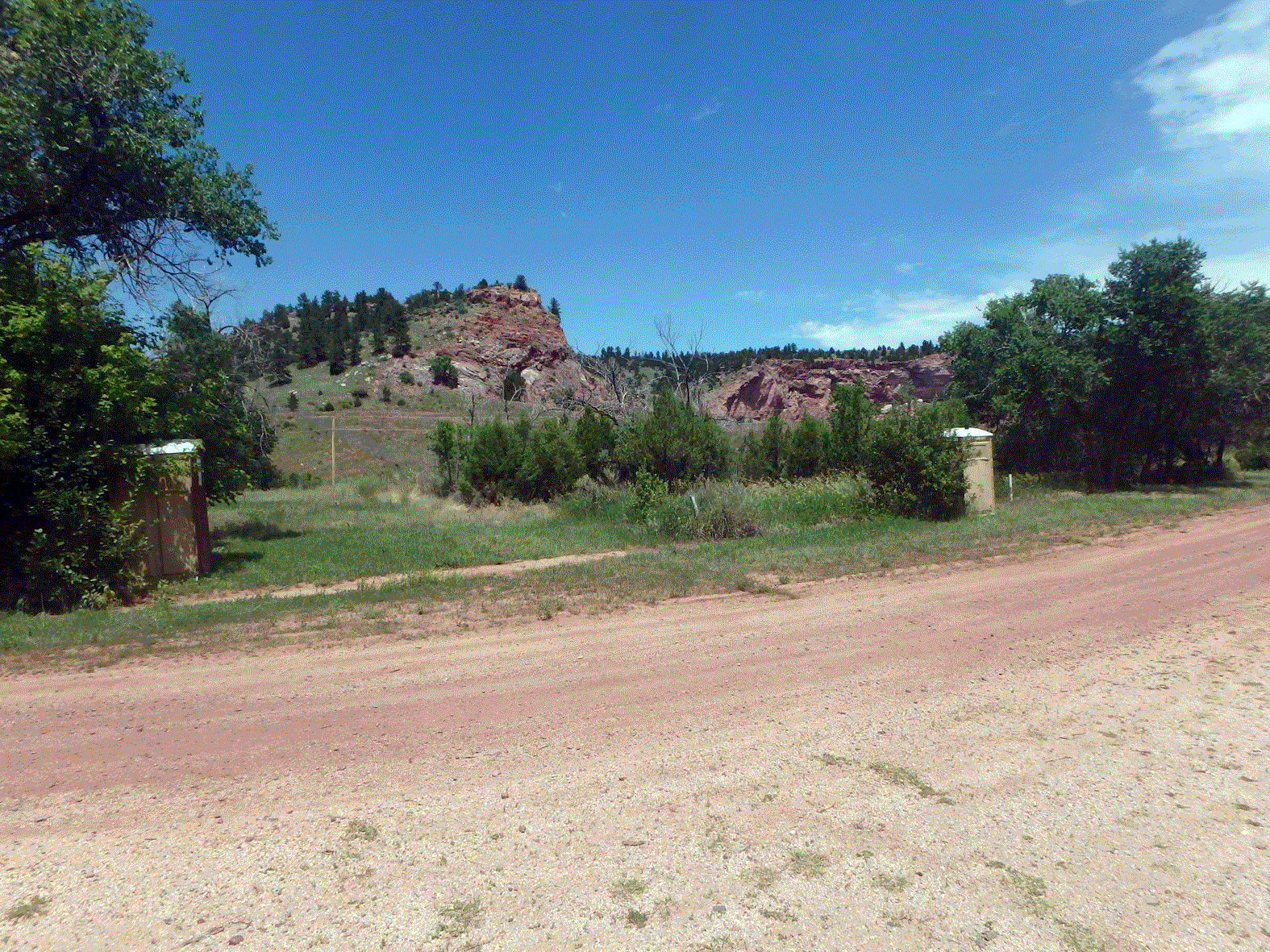
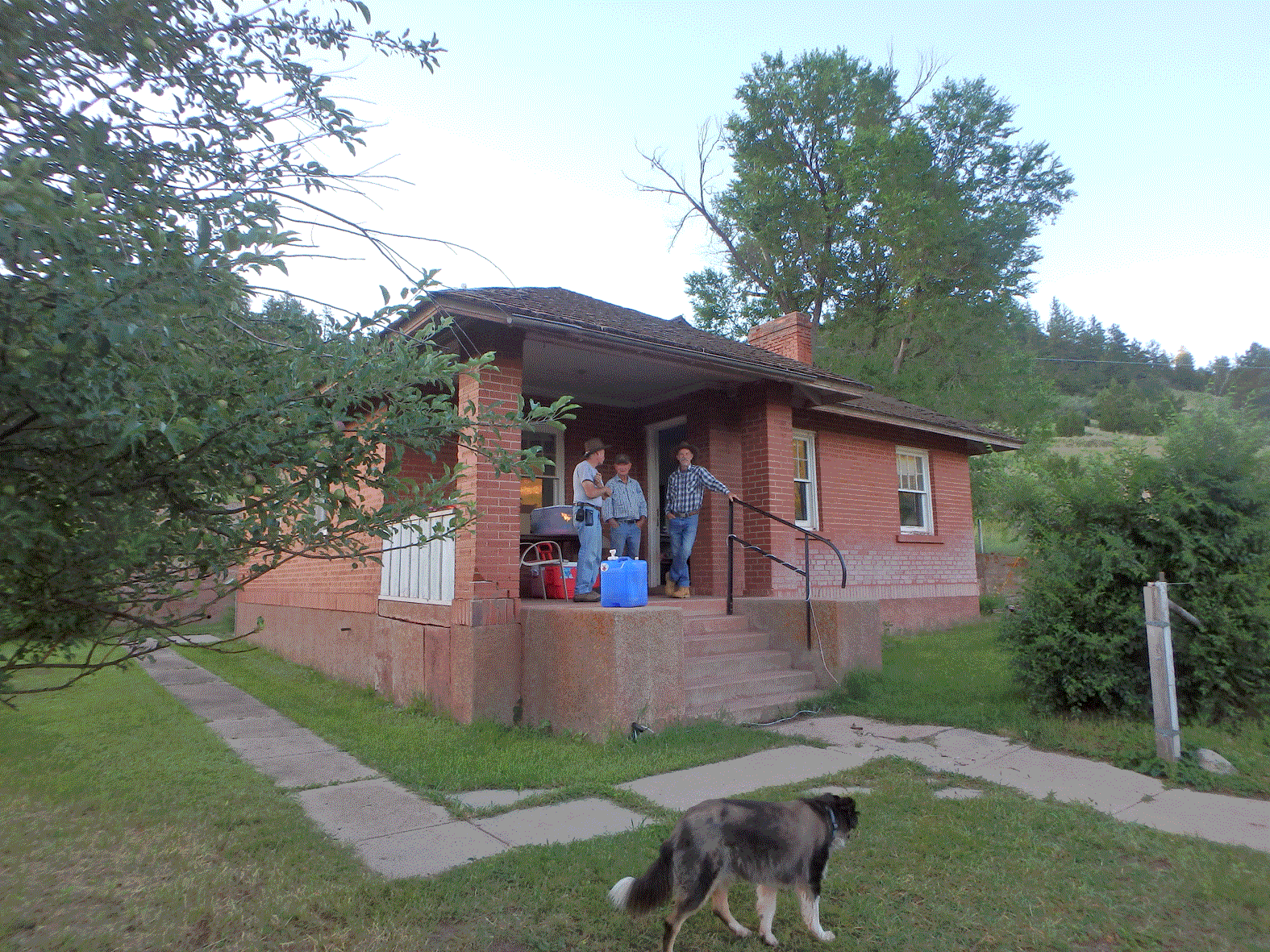

View of mine from center of town
One of six extant houses
YMCA building
The geology is fascinating and much yet needs to be studied, especially in relation to the flaking stone source, named JV chert after the owner. This, and the red ochre, are of particular interest to us. It is clear that the ochre source was being exploited very early in the history of the area, going back to Clovis times around 13,000 years ago. This is attested to by the large number of early projectile points that have been recovered in association. An article has been recently published about these finds. While salvaging disturbed archaeological deposits and testing to determine if there are any in-place, George Zeimens and crews encountered the JV chert source. At present, the geological explanation for this material isn't understood. Our job as knappers was to assess the ranges of variation in the stone and its qualities. As a material it extremely variable ranging from high quality yellow jasper and 'agate-like' varieties to poor qualities of chert with numerous inclusions and holes. We were given access to a stockpile of the material and allowed to select what we thought would be the best stone to knap. I broke up a lot of big pieces in search of good rock, and did find some, but I estimate only about 10% is very good quality.
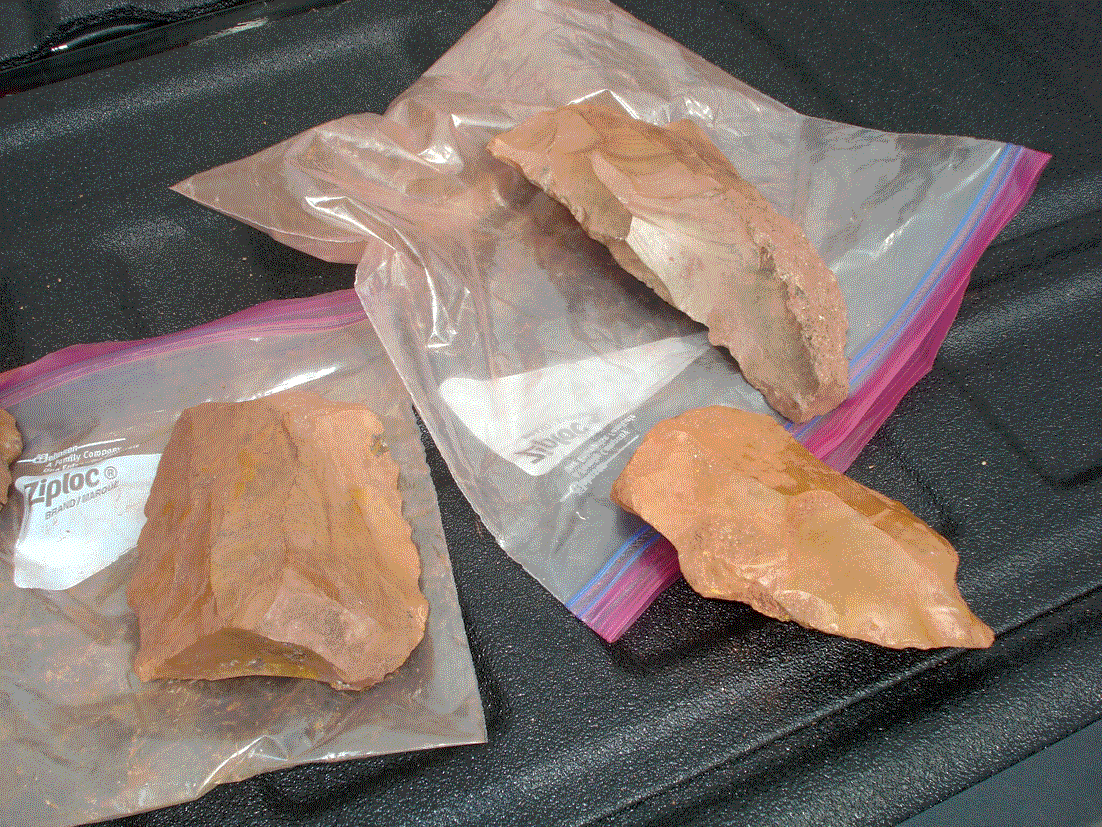
Archaeological flakes
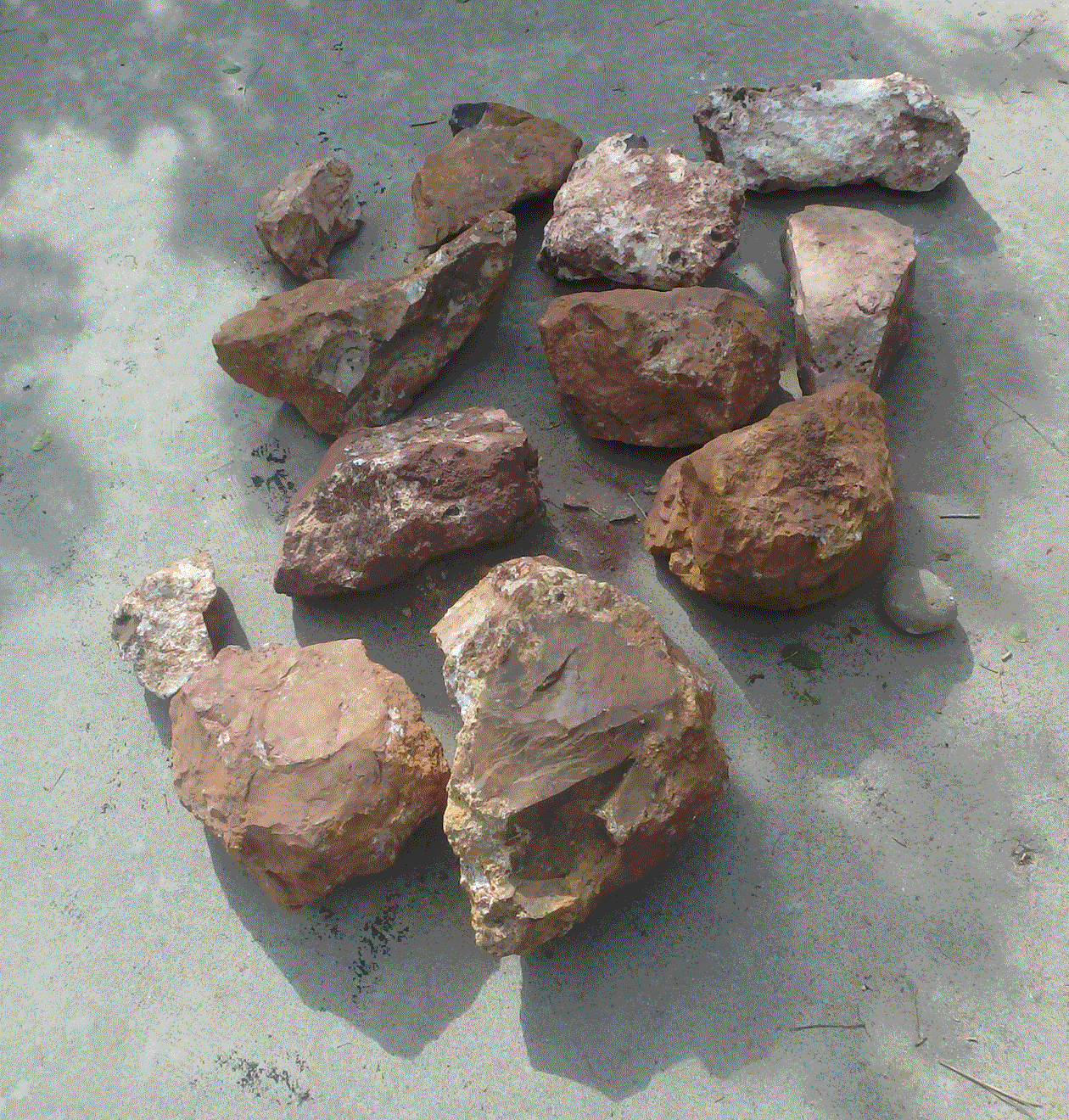
Raw unmodified pieces

Agate-like variety with inclusions
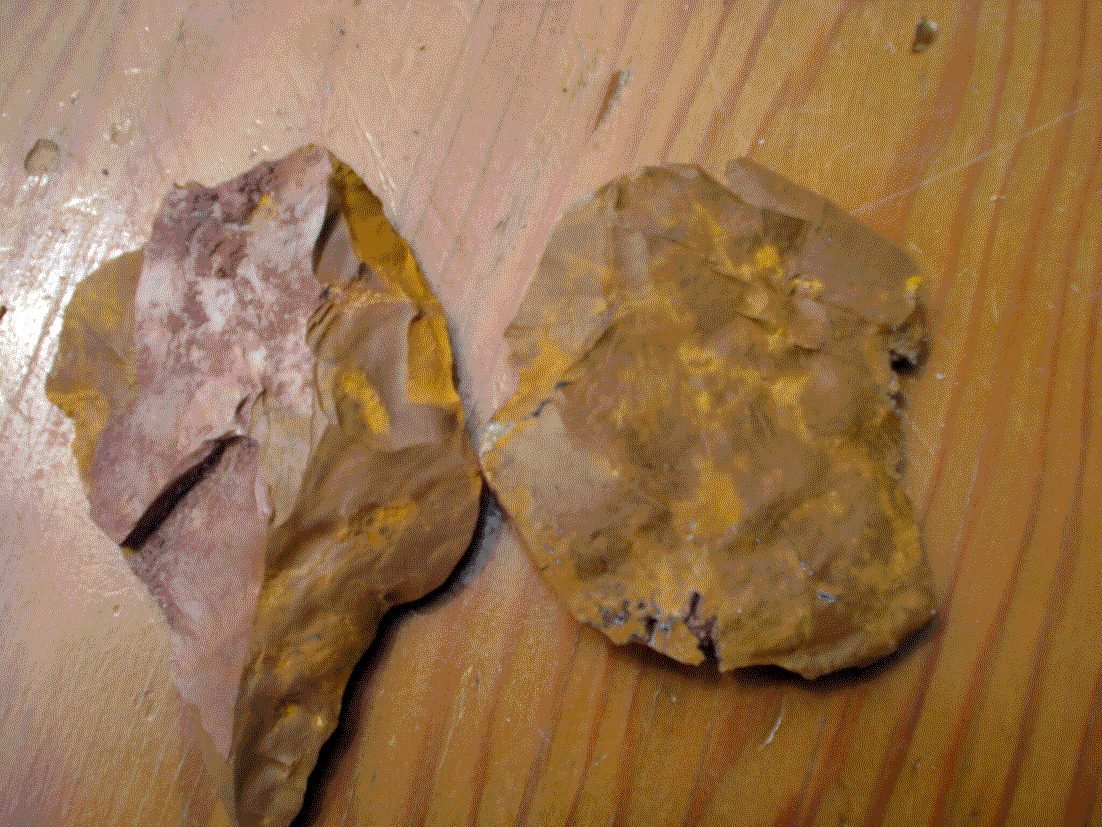
Yellow jasper

Range of variation between pieces

Range of variation within one piece

Waste from flake production

Useable flake blanks
There are a lot of cracks and inclusions but solid pieces flake nicely, from brittle (jasper) to strong (agate-like). The agate-like variety is improved by heat treating, but I haven't seen any Paleo-artifacts from the High Plains that were clearly heat treated. Overall the range and qualities of materials remind me of Spanish Point 'agate' from the Bighorn mountains, which formed through hydrothermal activity on a breccia in the Madison Formation. I suspect the JV 'chert' was also formed by hydrothermal processes.
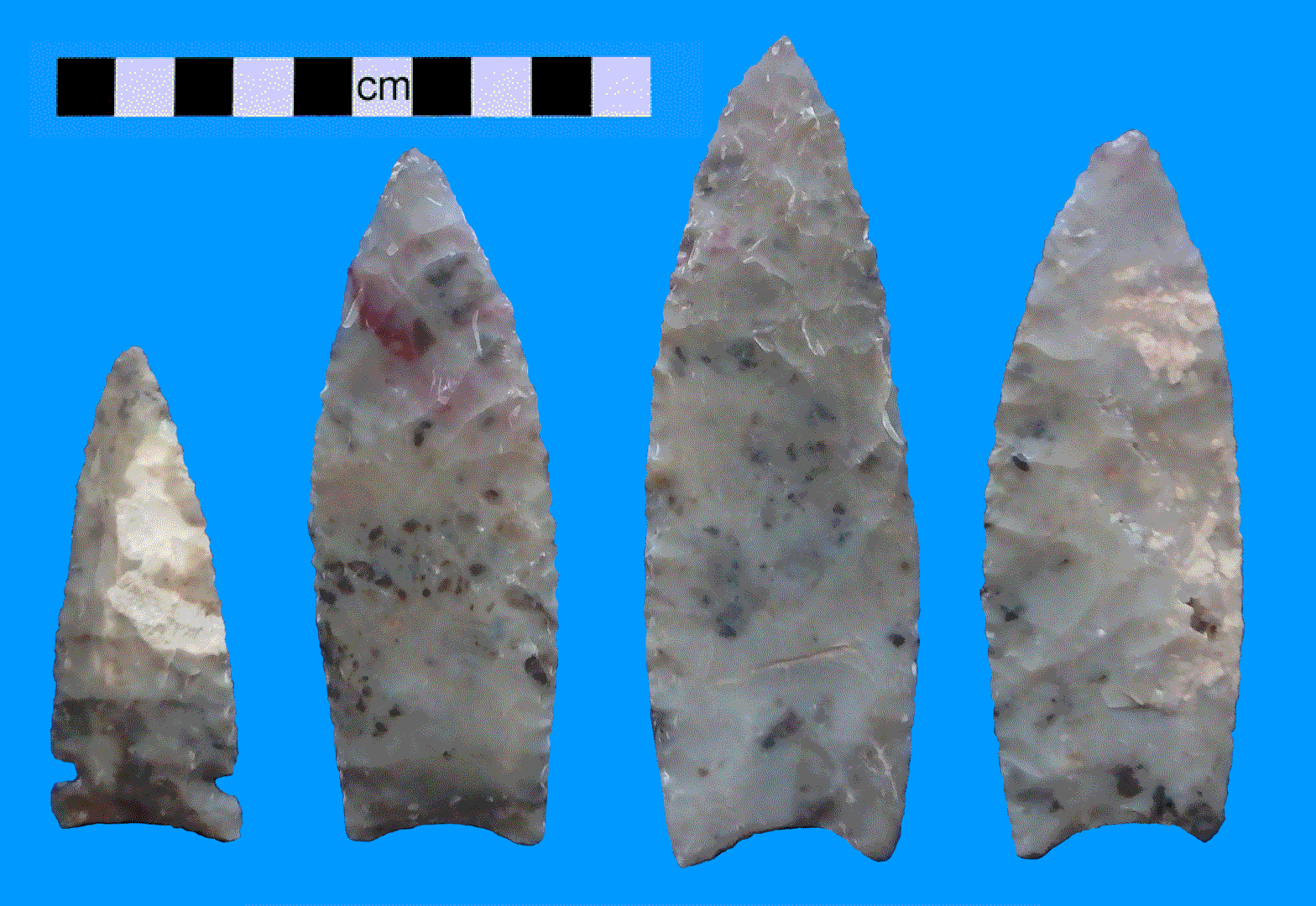
Points I made last year of JV chert- not heat treated
The red ochre is clearly derived from the iron-rich ores, especially specular hematite.. One only needs to hit two pieces together to get a rain of iron oxide. As part of ore processing settling ponds were used at Sunrise and the top layer of the sediment is 'pure' red ochre. This material is very greasy in feel and has a silver metalic sheen. It stains everything with which it comes into contact. While ochre was being procured in the distant past the process(es) have yet to be determined.

John Voight procuring an ochre sample from a stockpile
The best part of our visit to Sunrise was meeting up with colleagues and friends and making new ones. I worked with and was mentored by George Frison, Vance Haynes and George Zeimens way back in the 1970s and 1980s. It was fantastic reminiscing and telling stories of our great adventures (and misadventures), both archaeological and personal. We met new (to us) knappers and strong supporters of the Western History Center and the Sunrise endeavor. It was especially gratifying to get to know the owner, John Voight, who gave generously of his time and enthusiasm and made the event possible.

George Frison and Vance Haynes
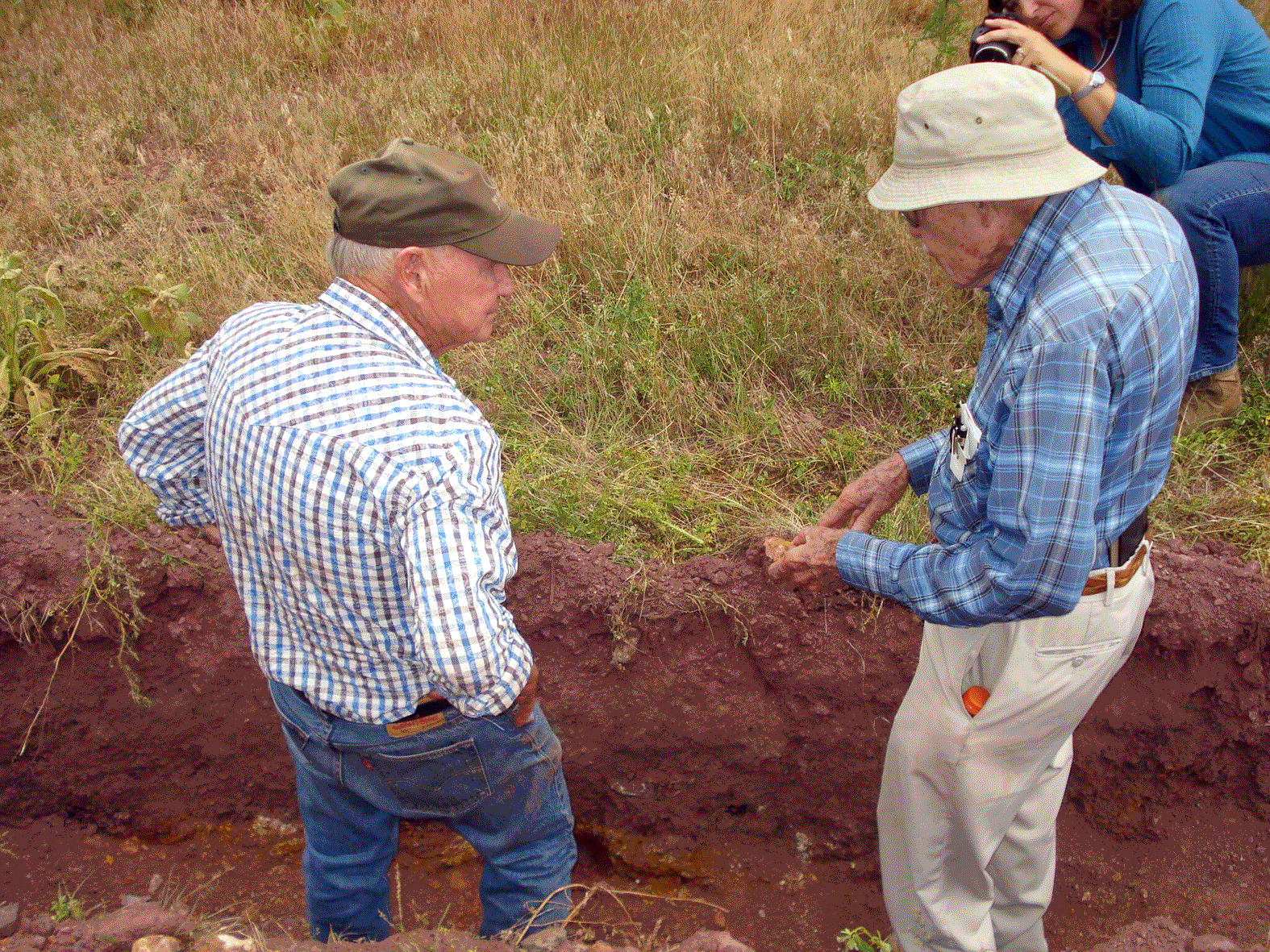
George Zeimens and Vance Haynes
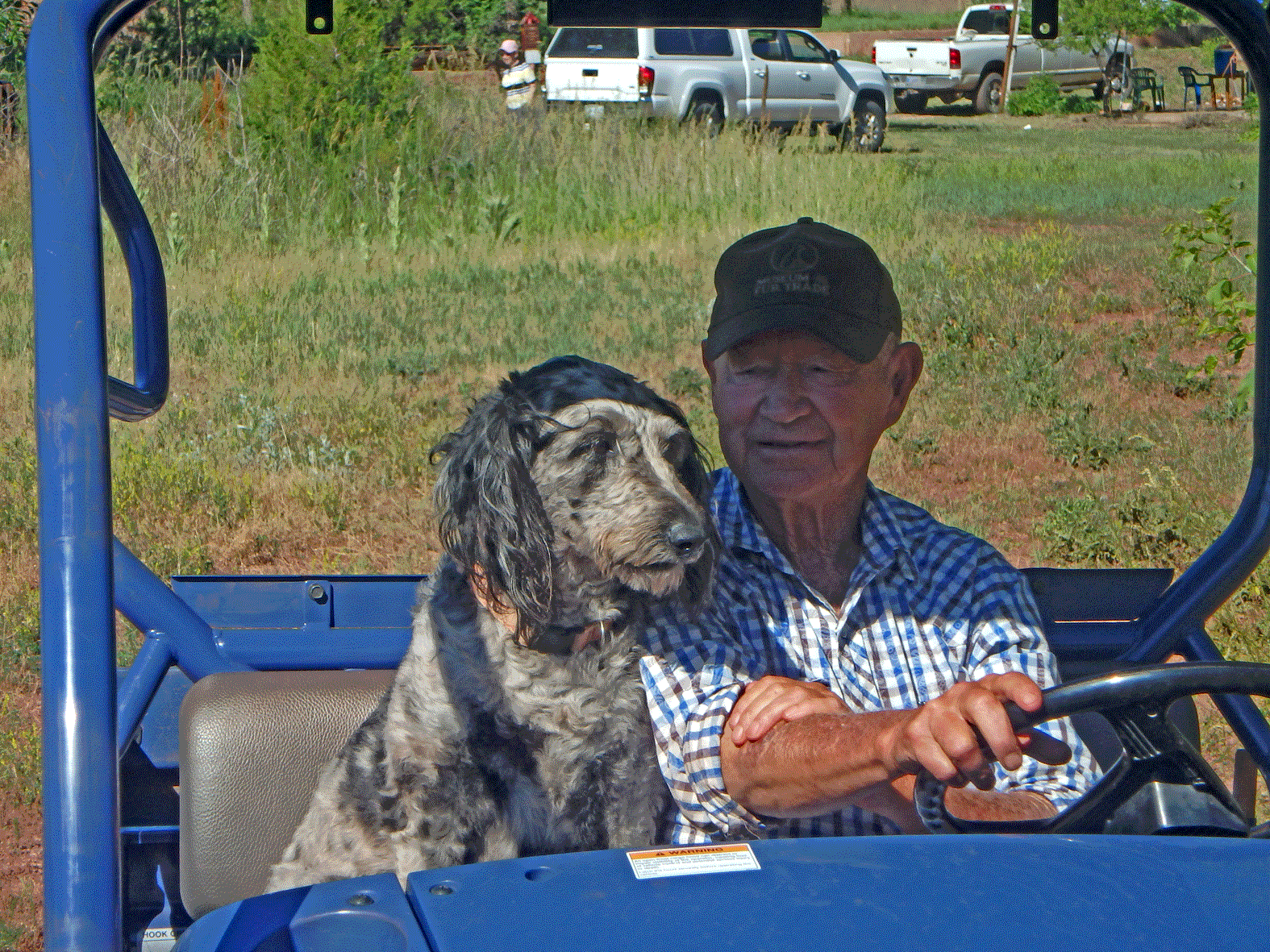
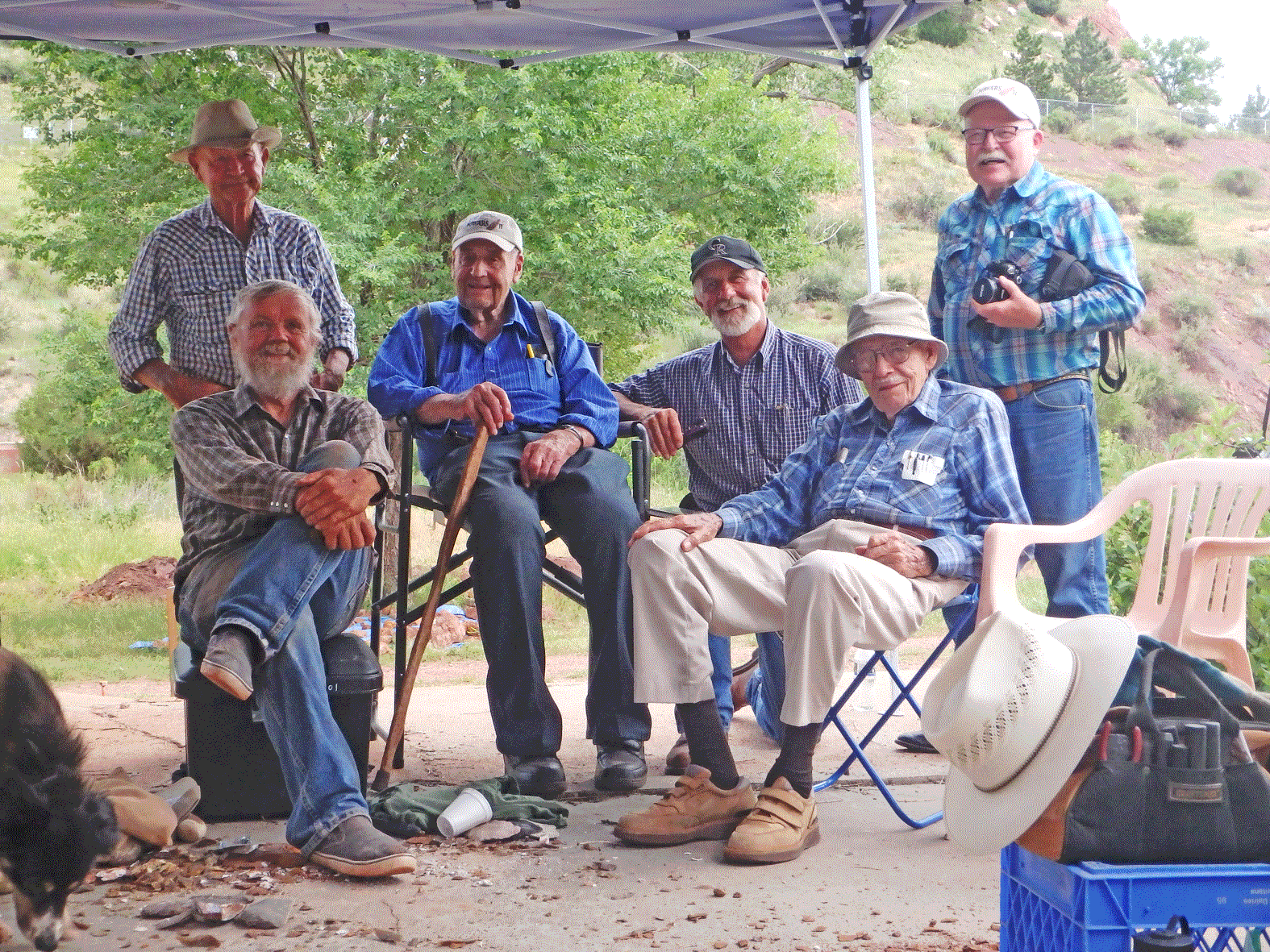
Left to right: George Zeimens (standing), Bruce Bradley, George Frison, John Voight, Vance Haynes and Jim Chase
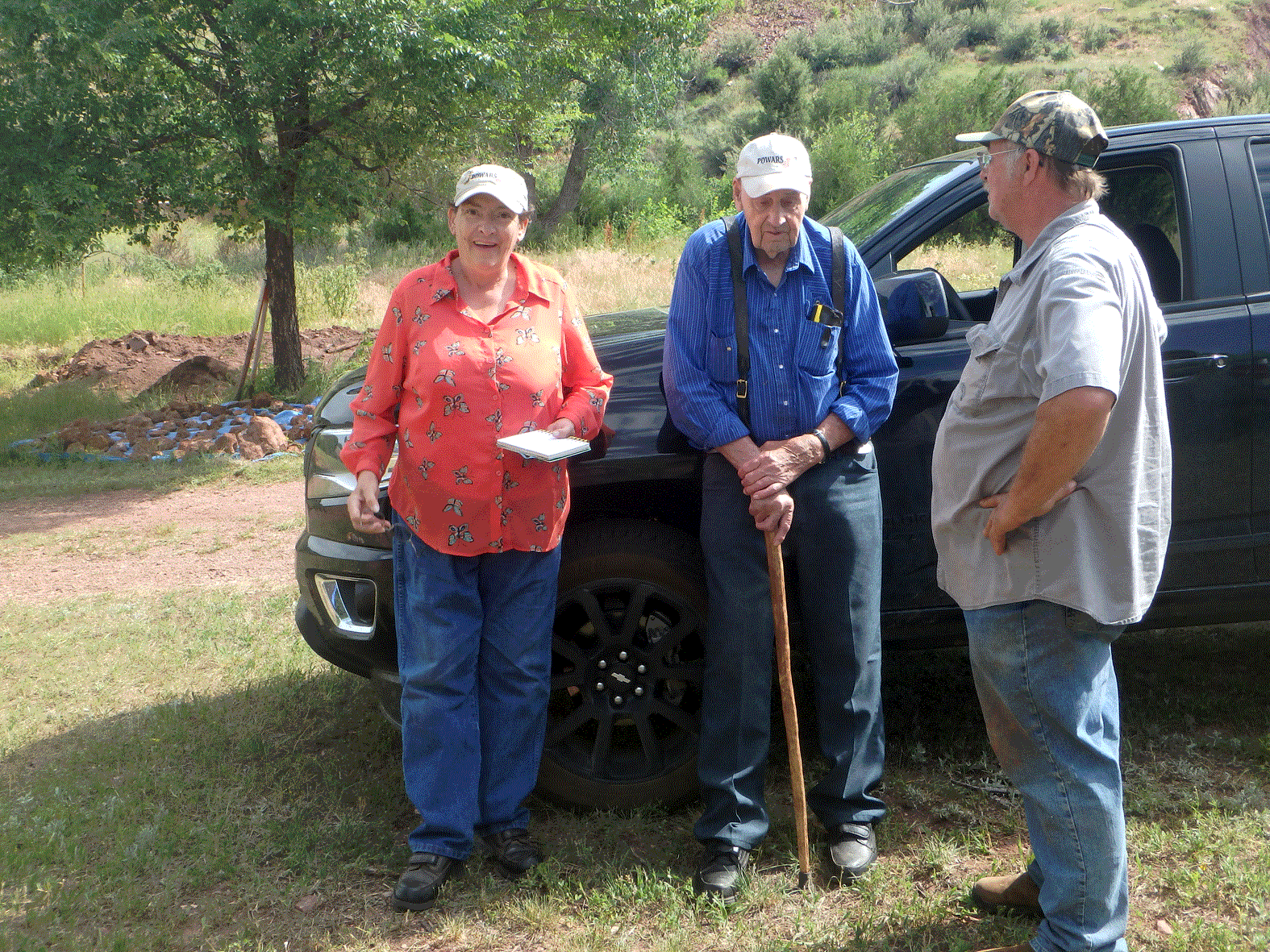
Pearl and George Zeimens
Carol Frison, George Frison and Phillip Floyd
On our final day at Sunrise, George Zeimens took us up to see the La Prele mammoth kill/camp site. The director, Todd Surovel, University of Wyoming told us about the history of the site (originally excavated by George Frison) and their current research which is focusing on activities that took place around the kill. our time was cut short by a lightening storm, so typical there in July.
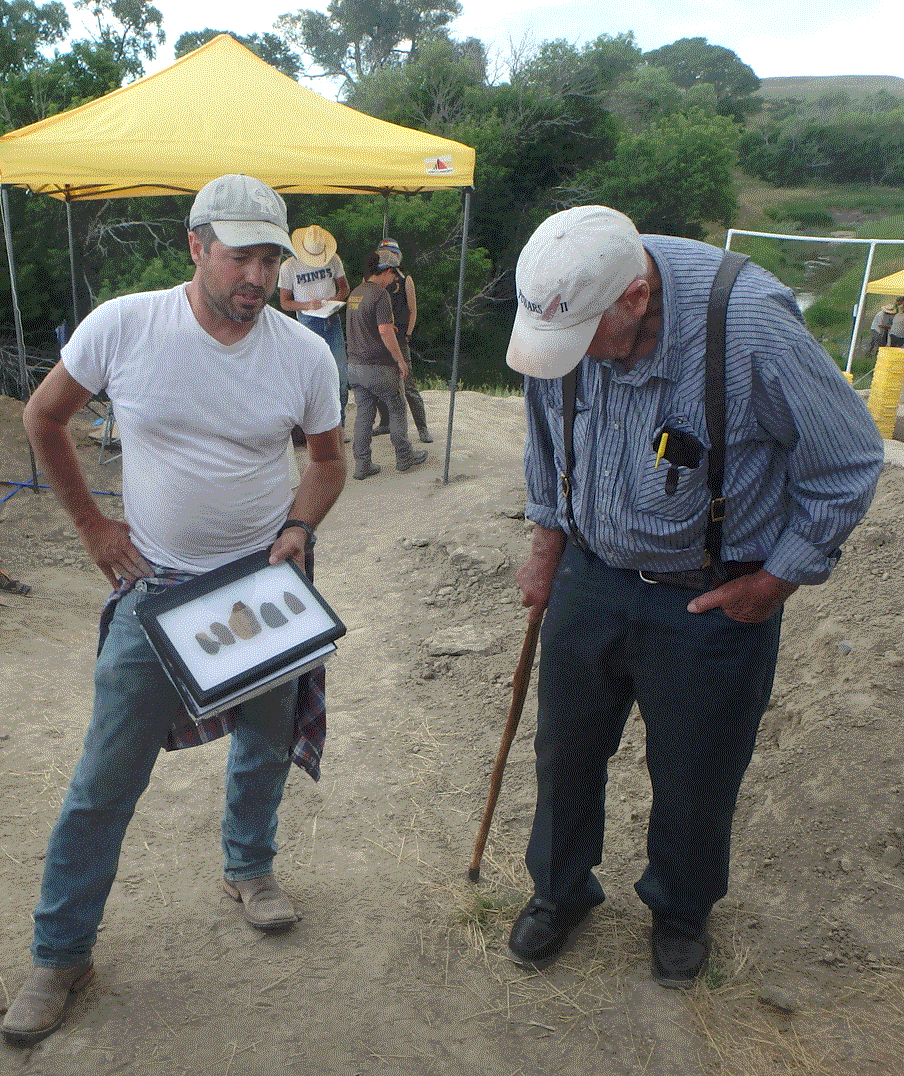

Todd Surovel and George Frison
Overview of current excavations
Several of us participated and were interviewed for a documentary about the archaeology of eastern Wyoming. We were also covered in the Cheyenne Tribune Eagle
